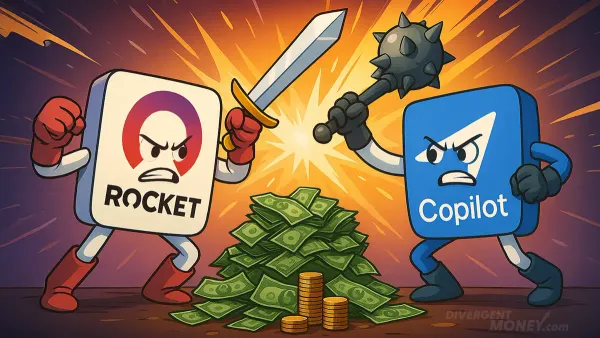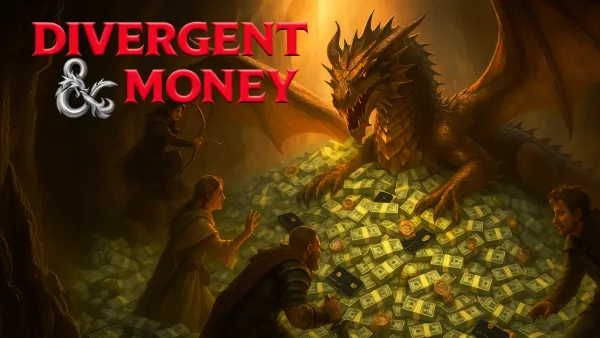Don’t Kill the Goose: Burnout-Proof Budgeting for Neurodivergent Brains
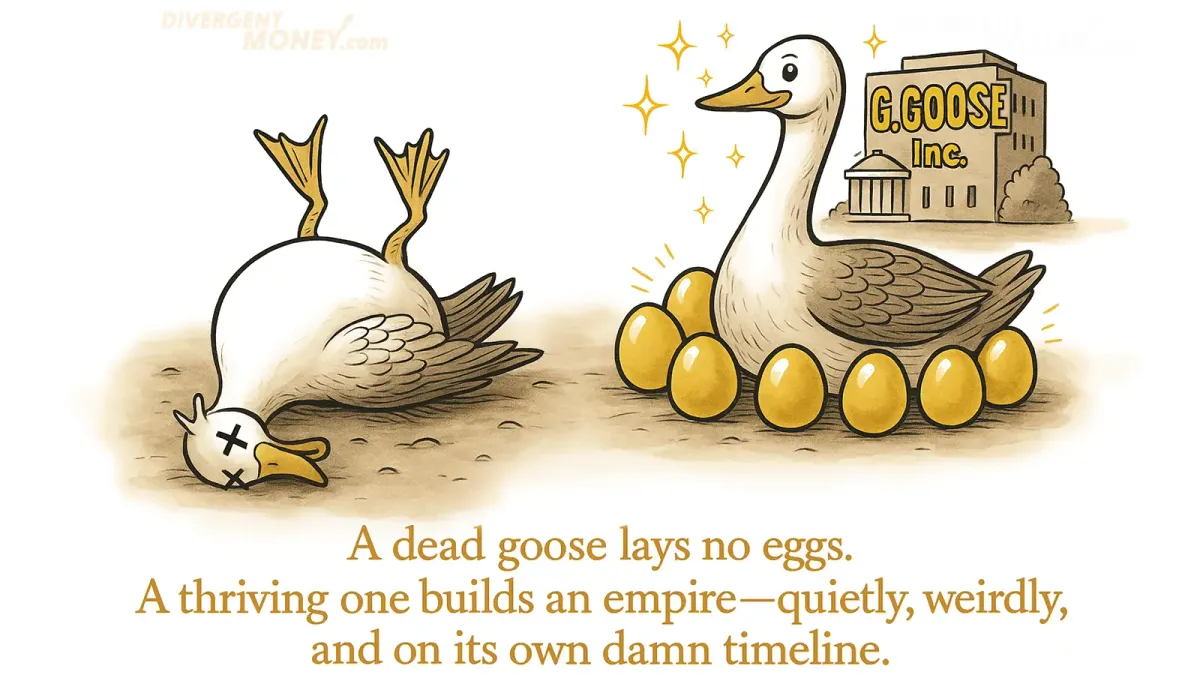
Neurodivergent people don’t need more discipline or better money habits—they need a system that respects their energy, sensory bandwidth, and nonlinear cognition. This guide introduces a full-spectrum budgeting system built around the nervous system, not in spite of it.
Understanding the Goose (That’s You)
Most people chase golden eggs. Neurodivergent people are the goose. You’re the source of your financial output, problem-solving, creative bursts, and bill-paying memory. If your brain burns out, the budget fails—no matter how good the spreadsheet looks.
"I don’t run out of money because I’m irresponsible. I run out of executive function. That’s what costs me." — ND reader, anonymous
The neurodivergent brain often operates in cycles of boom-and-bust energy, executive dysfunction, sensory overwhelm, and focus fragmentation. Any financial plan that ignores this is destined to fail.
Common Goose-Killers
(Sabotage Patterns We’ve Normalized)
1. The Shame Spiral Budget:
- "I should be able to keep up."
- Miss a payment. Freeze. Avoid. Spiral.
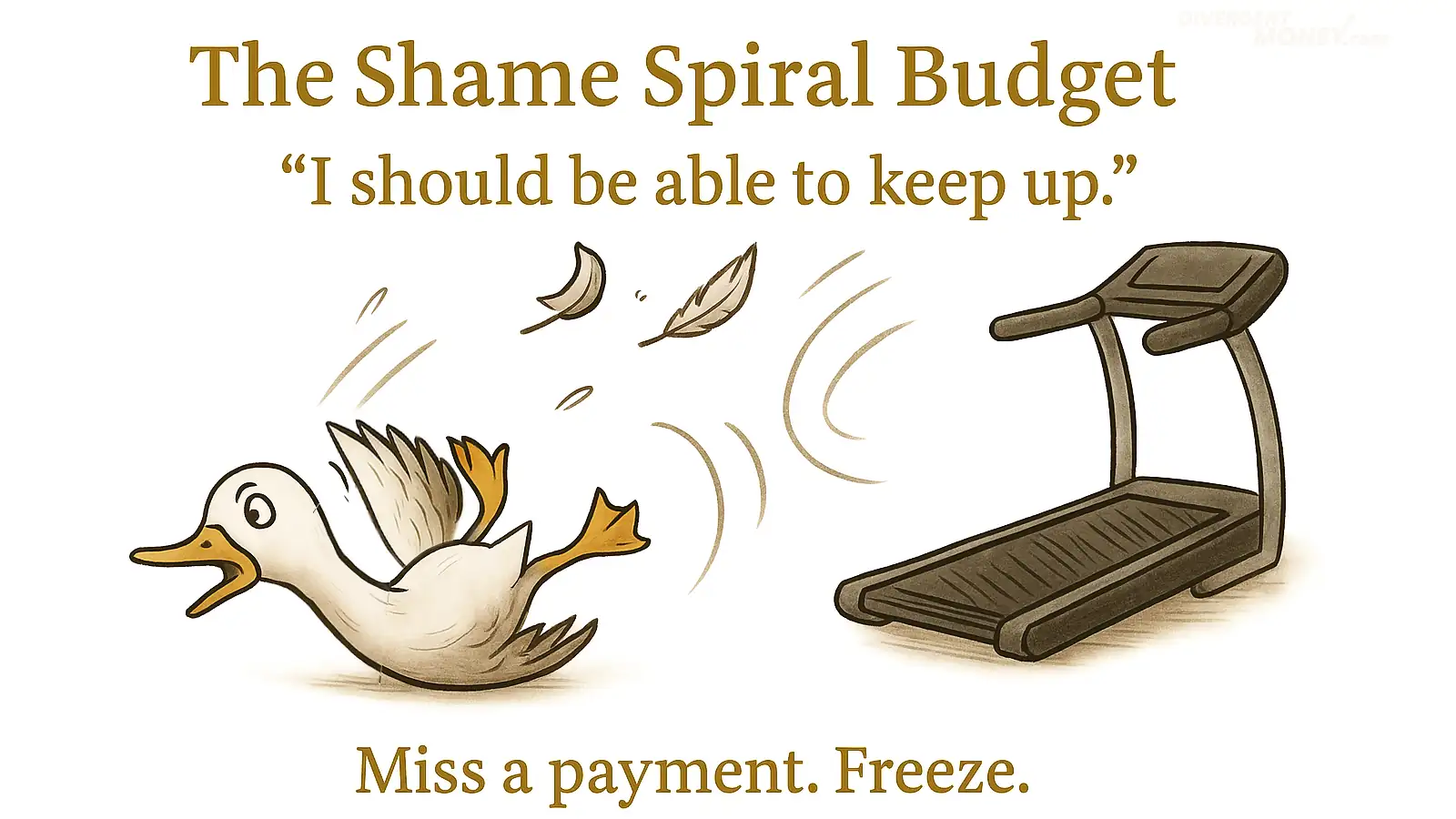
2. The Hyperfocus Burnout:
- Obsessively organize all finances in one 10-hour sprint.
- Then... disappear for 3 months. Nothing is maintained.
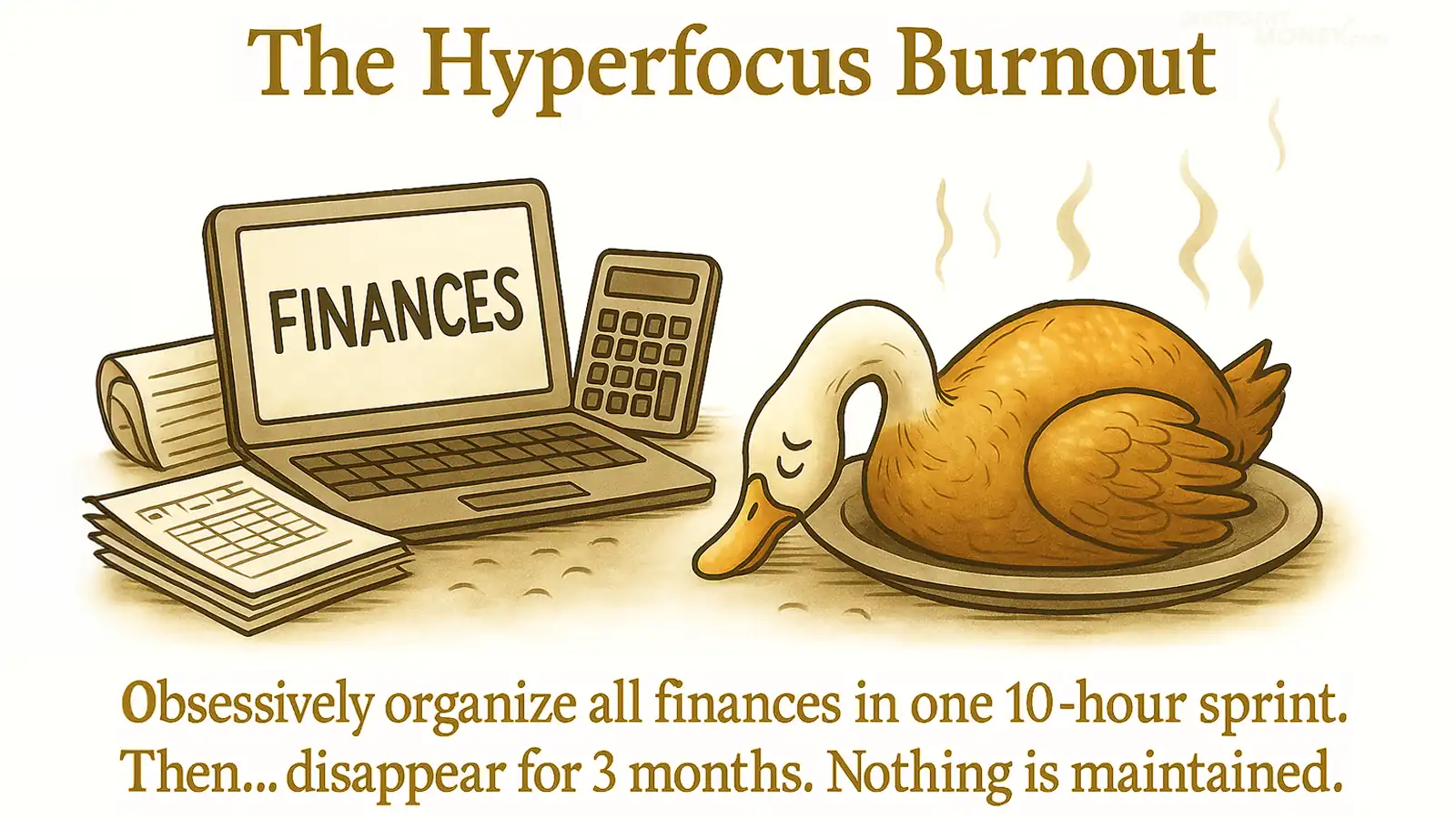
3. The Masking Budget:
- Using systems that look impressive but feel awful.
- Designed to impress others, not help yourself.
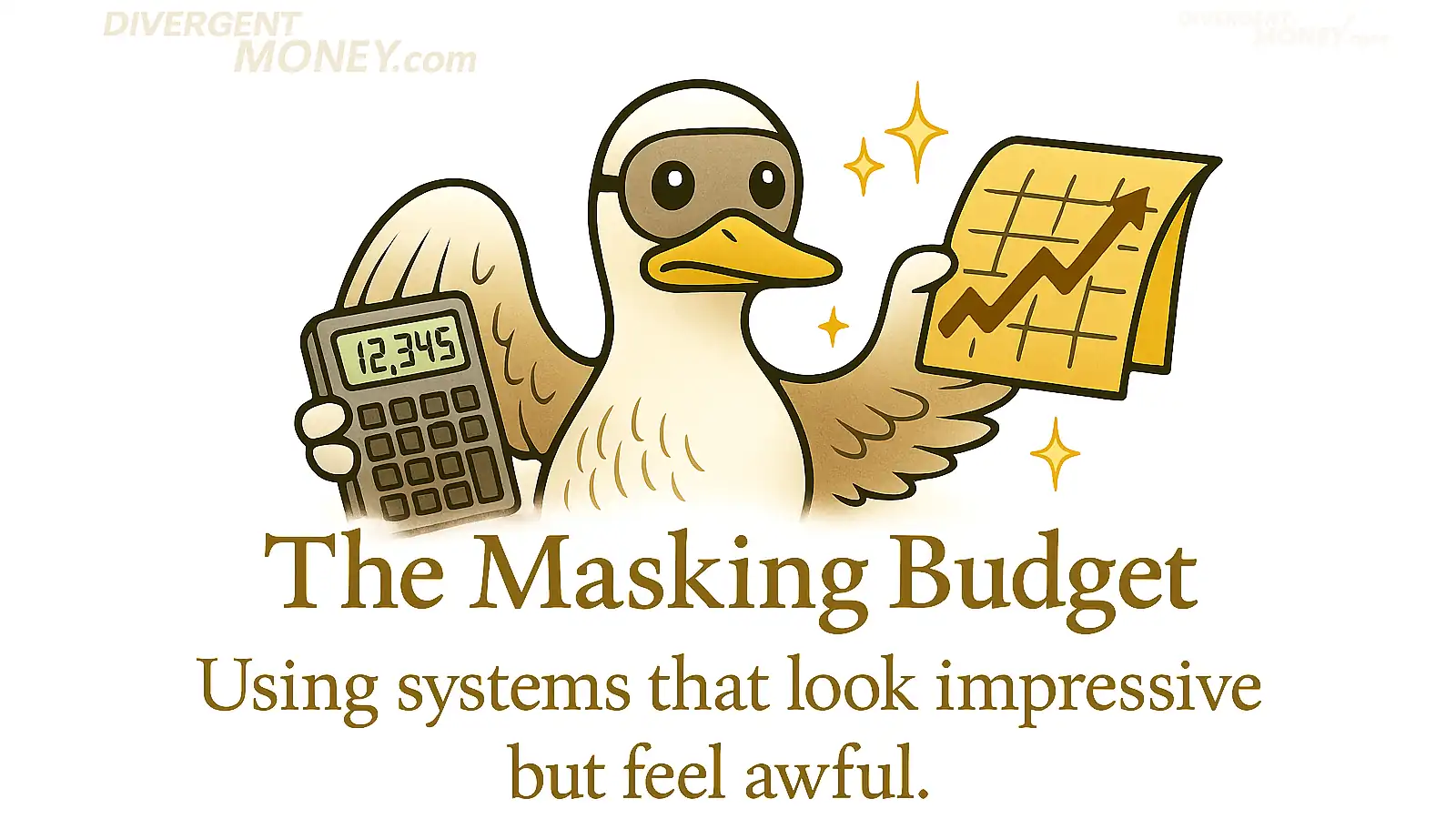
4. The Perfection Paralysis Plan:
- Never start because the setup isn’t perfect.
- Avoid finances because they’re emotionally unsafe.
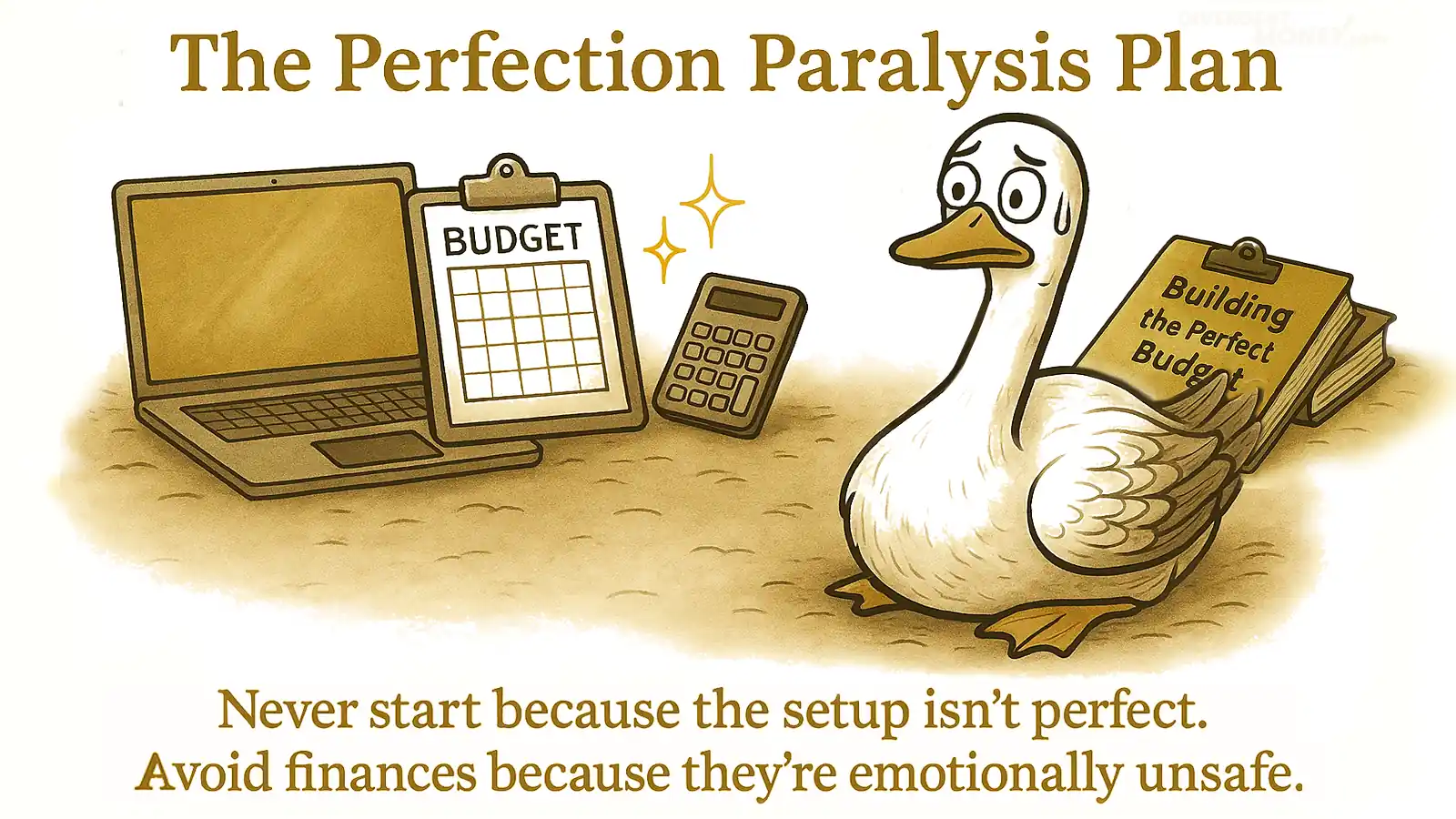
What Goose-Friendly Budgeting Looks Like
A. Two-Mode Budgeting Framework
Create two parallel systems: one for low-capacity days, one for high-energy bursts.
Low-Energy Mode:
- One screen: balance + bills
- One button: approve transfer
- Visual cues, minimal decision points
High-Energy Mode:
- Deep dives: categorize spending, review subscriptions, explore investments
- Batch processing: pay ahead, plan next 30 days
- Creative visioning: wishlist budgets, future pacing
Action: Build two financial dashboards. Label them “Goose Mode” and “Eagle Mode.”
B. Reset Weeks (Built-in Recovery Cycles)
Every 2 months, schedule a Reset Week:
- Open one account per day
- Forgive past mistakes (literally say it aloud)
- Recalibrate budget expectations
C. Emotional Accommodations
- Rename accounts: “Safety Net,” not “Emergency Fund”
- Create email filters: route financial mail to one calm folder
- Write scripts for when you're behind: "Hi, I had a difficult month. I’m catching up now. Can we waive this late fee?"
D. Buffer-First Planning
Start with margin, not optimization.
- “Oops Fund” with $10-$300
- Pay bills 5+ days ahead
- Block “decision space” on your calendar after large financial tasks
Goose Maintenance Checklist
Use this monthly:
- Checked account balances
- Replenished “Oops Fund”
- Forgave myself for any avoidance
- Labeled one stressful financial task as "optional"
- Had one Reset Hour or Reset Day
- Updated Goose/Eagle Mode dashboards
Tasha's Goose
Tasha is an AuDHD solopreneur in her late 20's. She told me once, "I used to write $10k months on sticky notes, but I couldn’t open my invoicing software. I was terrified of messing up. My friend helped me build a 2-tab system: one tab is for checking in, the other is just a playlist and a browser shortcut. That’s it. I use it almost every day."
Tasha also renamed her accounts to “Studio Nest,” “Snack Fund,” and “Future Weirdness Fund.”
She stopped budgeting to impress people, "Now I manage money to keep the goose alive."
What If Your Goose is Cooked?
(i.e. you're broke!)
This framework doesn’t require extra money. It requires nervous system awareness.
- Start with a $5 micro-buffer
- Use community tools: credit unions, mutual aid, nonprofits
- Track how tasks make you feel, not just what they cost
- Make avoidance-resistant decisions (e.g., schedule payments for payday + 1)
A goose doesn’t need luxury—it needs safety.
FAQs
What is Two-Mode Budgeting?
A budgeting system with a low-effort mode for difficult days and a deep-focus mode for energized days.
How do I reset my financial system if I’m overwhelmed?
Use a Reset Week: Open one account a day, review progress gently, and release guilt.
What if I have no savings or income stability?
Begin with micro-buffers, use calming naming systems, and focus on small wins like logging in or reviewing one item.
Disclaimer: As ALWAYS, this article is for educational and motivational purposes and is not financial advice. Always consider consulting with a financial professional for guidance tailored to your unique situation.



